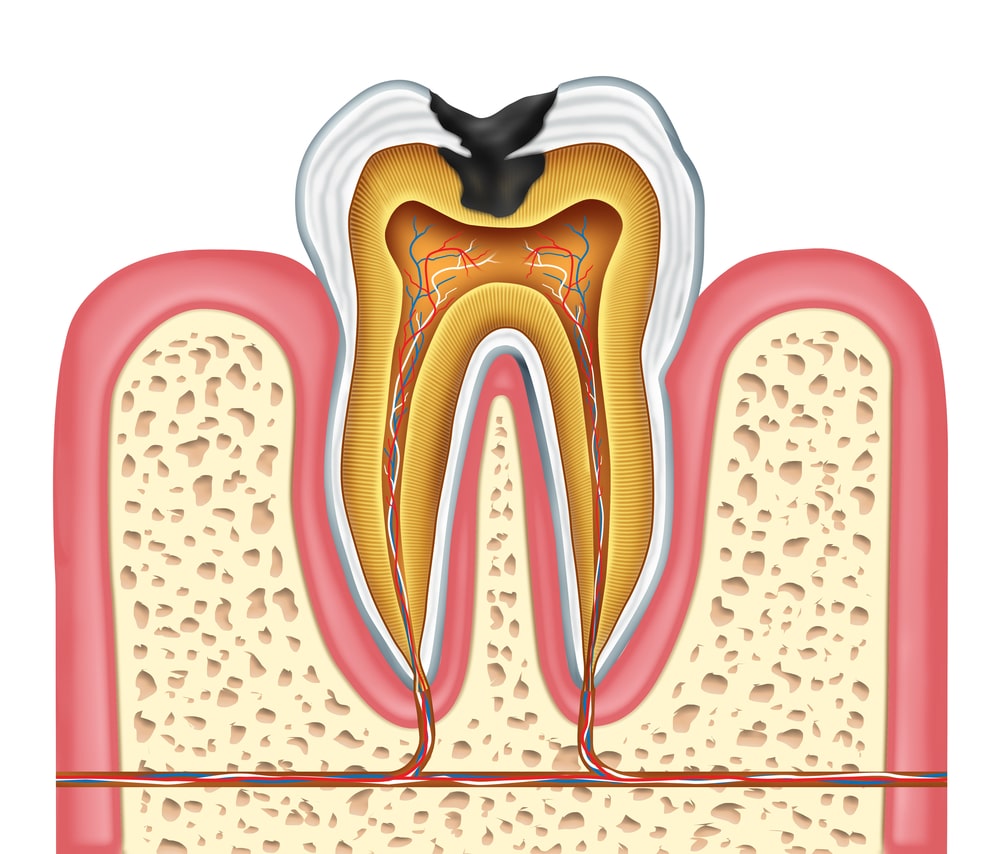Halloween brings scary movies, fun costumes, and candy galore. No wonder it’s so many people’s favorite holiday! But if you overindulge at Trick-or-Treat, you might have a scary dentist appointment in your future. What does a cavity look like, and how can you prevent them?
What Does a Cavity Look Like?
Have you ever woken up with a toothache? If you’re smart, you made a dentist appointment right away. Sometimes a toothache is nothing, but more often than not, it can mean you have a cavity. Wouldn’t it be nice if you could see a cavity before it started causing you trouble?
Unfortunately, cavities can be hard to spot. In fact, some cavities are so small that they cannot be seen by the naked eye. This is one of the reasons that dentists often order x-rays as a part of routine dentist appointments. However, you probably don’t have a dental x-ray machine sitting in your living room. So, how can you tell if you have a cavity?
How Do I Know If I Have a Cavity?
When it comes to spotting your own cavities, there’s good and bad news. The good news is that you don’t have to spot the cavity itself to know that it’s time for a dentist appointment. Instead, keep an eye out for these clues that a cavity may be developing:
- Increased tooth sensitivity. If you never had a problem with food temperatures before, but now that iced coffee is making you wince, there’s a good chance you’re experiencing enamel decay.
- Persistent bad breath. Yes, sometimes we can’t resist that extra-garlicky pizza for lunch. But if your bad breath sticks around long after you brush your teeth, the smell could be caused by a decaying tooth.
- Swelling or bleeding gums. If a section of your gums is extra red, swollen, and sensitive to the touch, this can be the sign of a cavity. Sometimes particularly irritated gums will even bleed.
- White or dark spots on teeth. If you spot a dark patch or speck on a tooth that doesn’t go away after you brush your teeth, it is very likely a cavity. But did you know that a white spot on your tooth can also indicate a cavity? White spots on teeth are a warning sign of demineralization, which means your tooth enamel is becoming weak, potentially due to cavities.
- A hole or crack in your teeth. Sometimes a cavity won’t get big enough for you to spot it with your naked eye. However, when you run your tongue across your teeth, you might notice something feels amiss. If you can feel a crack, hole, or other imperfection in your teeth when you do this, it’s time to go to the dentist.
It’s impossible to spot a cavity before it becomes an issue. If you know you have a cavity, or suspect you have a cavity, you’re heading for a filling. So instead of trying to spot a cavity, give yourself a break and stop cavities before they start.
How Can I Avoid Cavities?
There’s only one way to fix a cavity, and that’s getting it filled by a dental professional. If you don’t want to spend a lot of time in your dentist’s chair, you can avoid fillings by being careful with dental hygiene:
- Brush twice a day, and floss once a day. If you are particularly prone to cavities, consider brushing after every meal.
- Make sure to see your dentist at least twice a year for regular checkups and cleanings.
- Avoid overly sugary foods, as they can exacerbate tooth decay.
_____
What does a cavity look like? It can look like swollen gums, discolored spots on your teeth, or unexpected cracks and holes. It can also look like nothing at all. The only way to be sure you don’t have a cavity is to see your dentist regularly. If you haven’t been in for a while, why not make an appointment today?
Looking for a new dentist? Contact Wilkinson Dental if you live in or near Springfield, Missouri. You can request an appointment online or give us a call at 417-882-8222. We look forward to hearing from you!
